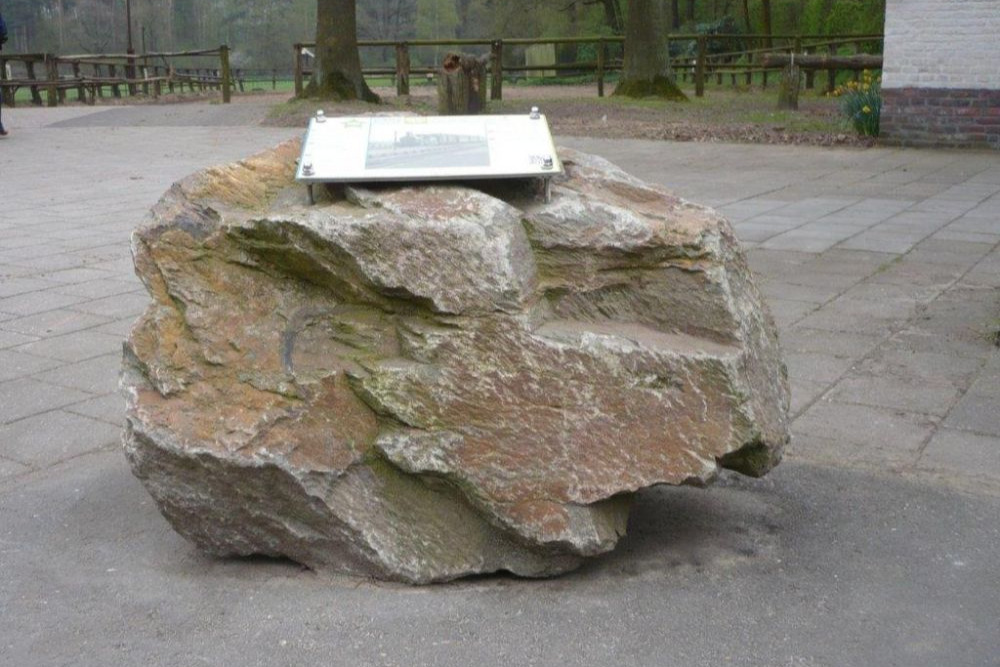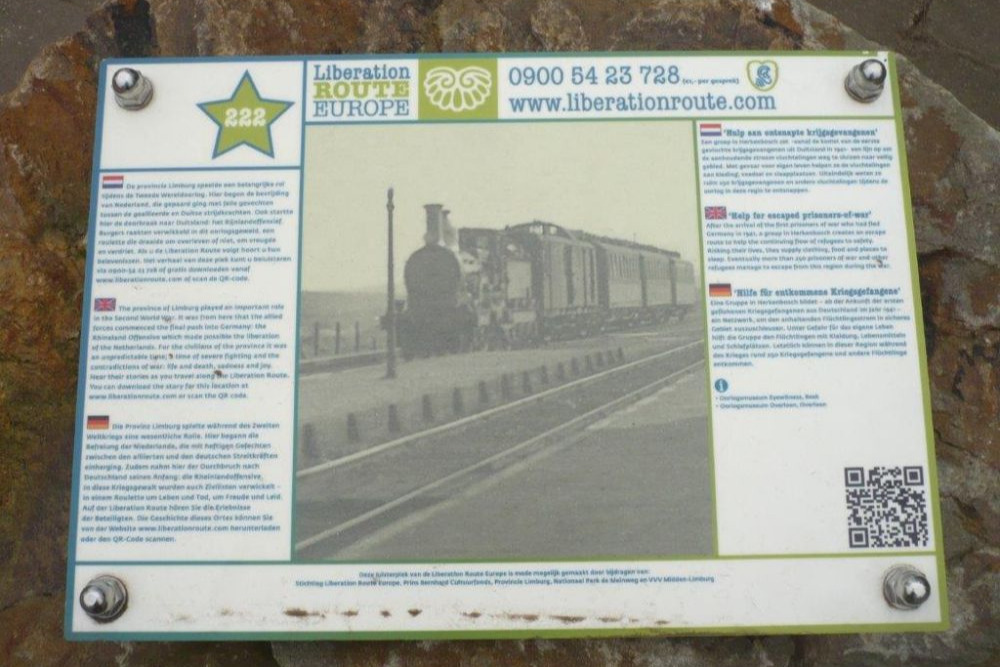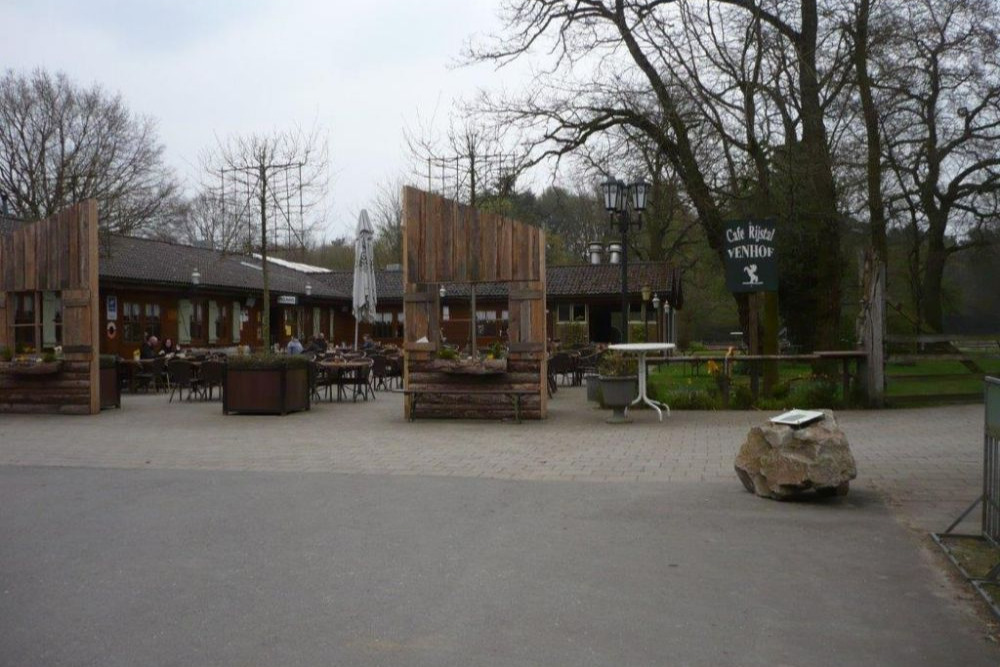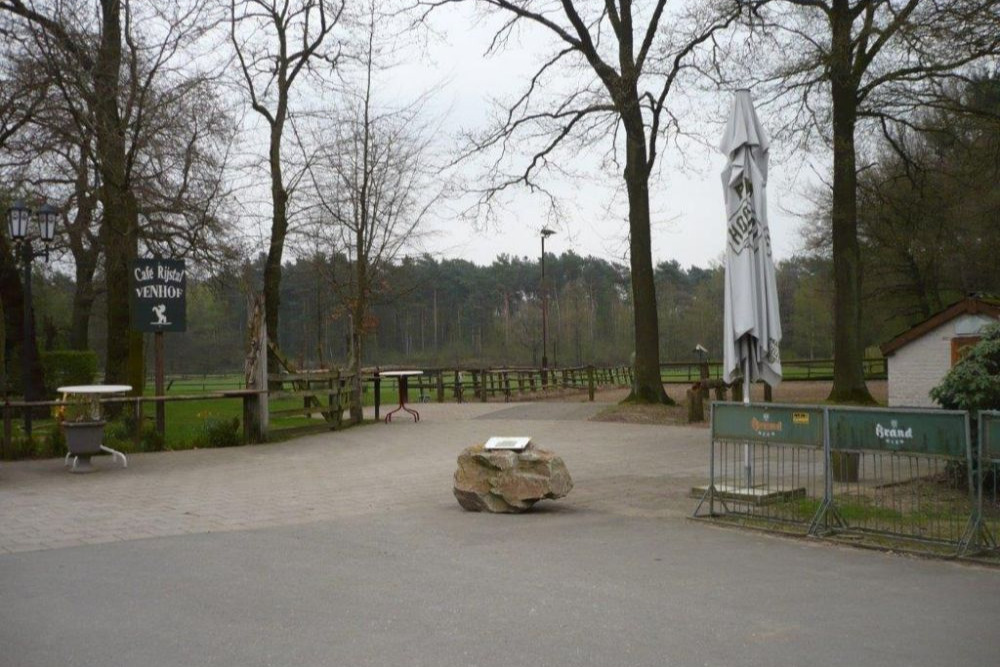Liberation Route Marker 222: Help for escaped prisoners of war
Help for escaped prisoners of war
After the arrival of the first prisoners-of-war who had fled Germany in 1941, a group in Herkenbosch create an escape route to help the continuing flow of refugees to safely. Risking their lives, they supply clothing, food and places to sleep. Eventually, more than 250 prisoners-of-war and other refugees manage to escape from this region via this network during the war.
In 1941, when for the first time, Leni Moors and her niece see escaped French prisoners-of-war from Germany, they little realise they themselves will help the resistance in Herkenbosch and its surroundings for years. She organises shelter for the prisoners-of-war and arranges clothing and food. A short time later, she takes them to the bakery behind the Venhof Farm.
Right from the start, the owner, farmer Simons helps by offering the escapees temporary shelter and food. And also Pie Beckers, head of the local underground with the pseudonym Bakker and who speaks a little French, gets involved, as well as chaplain Verscharen, Jan Haman and some others.
During the entire war, prisoners-of-war and others who escaped from trains and camps trickle across the border. They simply follow the Iron Rhine to the west, the railway line from the German Ruhr to Antwerp. They know if they walk far enough, they will eventually reach Dutch territory.
As a result, a network of people arises in and around Herkenbosch, who take huge risks with their lives, sending people safely onwards. The Moors family post office also plays an important role, as Marie Moors kept a sharp eye out for letters to Nazi sympathisers and monitored phone calls when Germans came from Ommen.
The fact that are also many collaborators and Nazi sympathisers in the area, made the work extremely risky. Still, about 250 people manage to escape the region.
After the war, several resistance fighters from the village receive the Resistance Memorial Cross for their heroic deeds and some are even awarded the French Croix de Guerre.
Audiospot - Help for escaped prisoners of war
Liberation Route Europe is a certified Cultural Route of the Council of Europe. With hundreds of sites and stories in nine European countries, the route links the main regions along the advance of the Allied Forces in 1943-1945.
The entire route consists of themed routes that can be travelled by by hiking, walking, cycling and car. These routes pass numerous historical and interesting sites and tell stories from a multitude of perspectives that were important in the final phase of World War II.
Many routes feature listening spots, offering the opportunity to listen to a historical story at a location. In addition, many ‘Vectors of Memory’ have been placed, indicating that the passer-by is on one of the Liberation Routes.
The routes can be found on the Liberation Route Europe website or in the app through which many stories can also be listened to.
Do you have more information about this location? Inform us!
Source
- Text: TracesOfWar & Liberation Route Europe
- Photos: Arie van Wijngaarden
Nearby
Museum
Point of interest
- Chapel O.L.V. Wijngaard Herkenbosch - Herkenbosch
- Information Sign War Victims Vlodrop - Vlodrop
- Court For Deserting Soldiers and Stealing Citizens - Effeld
Monument
- Memorial Civilian Victims Herkenbosch - Herkenbosch
- Air Crews Memorial - Herkenbosch
- Liberation Route Marker 210: Russian slave labourers executed in cold blood - Herkenbosch
Cemetery
- Roman Catholic Cemetery Asenray - Asenray
- Norwegian War Grave Churchyard Monastery St. Ludwig Vlodrop - Vlodrop
- Dutch War Graves Municipal Cemetery "Tussen de Bergen" Roermond - Roermond
Remembrance Stone
- Stumbling Stones Scheidingsweg 118 - Roermond
- Stumbling Stones Nassaustraat 30 - Roermond
- Stumbling Stone Thorbeckestraat 10 - Roermond
Fortification
- Maas-Rur-Stellung - Tobruk Bunker - Herkenbosch
- Maas-Rur-Stellung - Tobruk Bunker - Herkenbosch
- Ringstand 290 Vlodrop - Vlodrop







